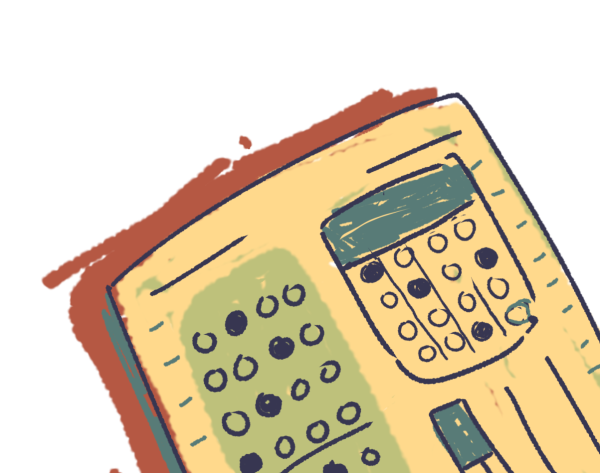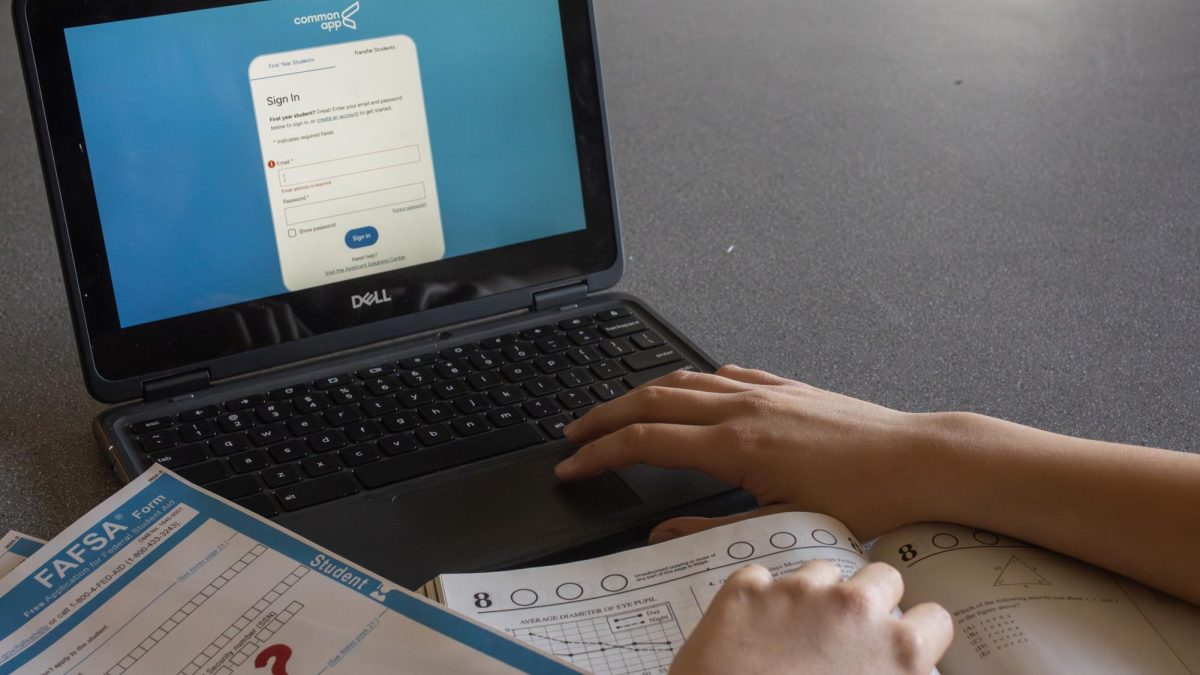
It’s AP season, and Drew, a junior under a pseudonym, just discovered that their College Board accommodation request hasn’t gone through. College Board never got back to the Lowell counseling center about their accommodations. For Drew, who processes relatively slowly and experiences severe test anxiety, extra time and a separate testing space are critical. Frantically, they email the counseling department, finally securing their accommodations less than a week before their AP Biology test. They enter the test already stressed and overwhelmed by the application process. On the test day, the proctor rushes to find another test packet for them. As a result, Drew isn’t released until the late afternoon. They spend over five hours in the testing room and emerge exhausted, not only from the AP test itself but from the process they went through to take it.
Drew isn’t alone. Students nationwide who require accommodations struggle with College Board’s complicated and ineffective system.
Test accommodations are alterations to standardized tests intended to make them more accessible to students with disabilities. Students like Drew believe that College Board accommodations for AP tests and SATs have been insufficient, as they are difficult to attain and often ineffective. The default accommodations that College Board provides—usually time and a half—don’t work for every person. Because of the College Board accommodation process, students like Drew find themselves making do with imperfect accommodations.
Although most colleges have stopped requiring standardized test scores, students like senior Meredith Lustig find it difficult to avoid Lowell’s test-centered environment. “There is still a big SAT culture,” Lustig observed. “If you didn’t take it, people are going to ask you why you didn’t take it. It’s still part of us.” Ms. Aguirre, Lowell’s college counselor, also points to test scores as a potential boost to students’ college applications. “Not only are AP scores going to help you make your application more competitive… but you also are getting credit and saving yourself money,” Aguirre said. She also pointed out that for students who had dips in their GPA, or who haven’t taken as many challenging classes, a good SAT score can prove that they’re capable of handling college coursework. But test scores are a double-edged sword: they can also have negative impacts. “If a student didn’t do that great on a test and submitted their scores, even if their GPA was strong, it could hurt them,” Aguirre said. As a result of lacking individual accommodations, Lustig argues that students with disabilities may be denied the advantages of submitting test scores, or harmed by submitting them at all.

Despite the College Board website portraying SAT and AP accommodations as easily accessible for a wide variety of disabilities, senior Lily Galante, who is applying for accommodations, finds the process lengthy and lacking transparency. Processing requests can take up to seven weeks. College Board may also ask for further evidence of a student’s disability—delaying the processing cycle even more. They also require students to prove they’ve used the same accommodation at school before. Having a 504 Plan or IEP at school can make the process easier because formal documentation is available, but it’s still time-consuming. Without a 504, the process is even more difficult. Galante, who doesn’t have a 504, faces a long wait time and a smaller selection of accommodation options. “I didn’t want to fill out all the paperwork for a 504,” Galante said. She opted for the less formal Student Support Team (SST), so it’s more difficult to get formal accommodations now. Galante is okay rolling with the punches, however. “I’m working with the bureaucracy,” she said with a shrug. “You get what you get.” Daunted by the application process, senior Alessandra Palange didn’t apply for accommodations before their PSAT, and scored much lower than they anticipated. After applying for accommodations, they took the SAT, and scored in line with their practice tests—almost two hundred points higher than their PSAT. While the result of their accommodations was undoubtedly positive, they were still disillusioned. “It takes forever. You can’t just apply for accommodations before your test and expect to have them,” they said. “It’s also not a very clearly outlined process.”
For students such as Galante, processing disabilities and dyslexia are insufficiently provided for. Dyslexia is extremely common; an estimated 15-20 percent of Americans have dyslexia. While dyslexia is often considered a visual disability, it runs much deeper. According to Mayo Clinic, dyslexia is not a visual impairment; dyslexic people have difficulty processing written language. On the SAT, passage-based questions comprise more than half the test. College Board offers large print tests for dyslexic students, but if students struggle to interpret written language, making the print larger won’t help them understand the directions or passages. The International Dyslexia Association recommends simplifying written directions or offering verbal ones in addition, which are not default options for dyslexia accommodations. Galante, who has processing difficulties, would love to receive an audio companion for passage-based tests. “Audio would help me so much,” she said. “I’m a lot better with sound than looking at things.” However, she’s only eligible for extra time. Galante said the extended time will definitely help but admits that there are other accommodations she can’t get on College Board tests that would make a difference.
Even for students with ADHD, anxiety, and similar learning disabilities, who make up the most significant portion of people who receive College Board accommodations, extra time doesn’t work for everyone. For almost all disabilities, students are given a drop-down menu providing default accommodation options, the most common being time-and-a-half. Although College Board’s website offers a greater variety of accommodations, requesting them is tedious, often requiring multiple diagnoses from professionals, as well as extensive documentation of the disability. Because of this intensive process, most go with the default options. While extra time can be helpful, it isn’t a catch-all. With tests becoming even longer, the College Board assessment timing often leads to “extra waiting and less flexibility,” Drew said. Palange, who receives extra time, is also frustrated by the sheer length of assessments. “I’m sitting in a room for six hours staring at a piece of paper,” they said. “I got out of the AP Computer Science A test at 6 p.m. It was ridiculous.”
Each student, even those with similar disabilities, may require different accommodations to thrive. For example, Lustig would prefer audio versions of passages to help pace herself. “I really work best when visual and audio are paired together because that’s the only thing I can focus on,” she said. Palange likes having more frequent breaks to allow for a mental reset during test sections, while Galante would like to use highlighters to improve her detail orientation. But Galante is hesitant to apply for unconventional accommodations because she feels that these requests are unlikely to be approved. “A lot of these things feel too boujee to even ask for,” she said. Even though unconventional accommodations would potentially help students focus, the College Board accommodation process is set up to discourage custom alterations.

Accommodating students with disabilities isn’t a one-size-fits-all process. “Everyone learns differently,” Galante said. “A greater variety of default options would be super helpful.” Ultimately, Drew feels that although College Board accommodations are helpful in general, there is a lot of room to improve. “The people managing AP testing need to be more specific with instructions to students,” Drew said. “I would change the process.”









